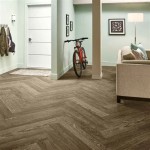Rubber Flooring Transition Strips: Seamlessly Connecting Different Flooring Surfaces
Rubber flooring is a popular choice for a variety of applications due to its durability, safety, and comfort. However, situations often arise where different types of flooring need to be joined together, creating a transition between them. This is where rubber flooring transition strips come into play. These specialized strips provide a smooth and aesthetically pleasing transition between rubber flooring and other floor coverings, such as tile, wood, or carpet, ensuring a seamless flow and minimizing potential tripping hazards.
Benefits of Rubber Flooring Transition Strips
Rubber flooring transition strips offer several advantages that contribute to their widespread use in various settings, including commercial, industrial, and residential. Here are some of the key benefits:
Seamless Transition:
The primary function of rubber flooring transition strips is to create a smooth and continuous transition between different flooring types. This eliminates abrupt changes in floor level, preventing potential tripping hazards and ensuring a safe and comfortable walking surface. They are particularly important in areas with high foot traffic, minimizing the risk of accidents and injuries.
Improved Aesthetics:
Rubber flooring transition strips are available in a wide range of colors and styles to complement the existing flooring. They can be chosen to match or contrast with the surrounding flooring, adding a touch of elegance and sophistication to the overall design. By visually blending the different floor coverings, they enhance the aesthetic appeal of the space.
Durability and Longevity:
Rubber flooring transition strips are designed to withstand heavy foot traffic and wear and tear. They are made from high-quality, durable materials that can withstand the rigors of daily use. The resilience of the material ensures that the strips maintain their shape and integrity over time, providing long-lasting performance and minimizing the need for frequent replacements.
Protection Against Damage:
Rubber flooring transition strips also serve as a protective barrier between different flooring types. The strip helps to prevent damage to the surrounding flooring, such as scratches or dents, that can occur due to the movement of furniture or heavy equipment. They act as a buffer, absorbing impact and minimizing the risk of damage to the delicate materials of the adjacent flooring.
Types of Rubber Flooring Transition Strips
There are various types of rubber flooring transition strips available, each designed to meet specific requirements based on the flooring type, installation needs, and desired aesthetic. Some common types include:
T-Molding:
T-molding is one of the most popular types of rubber flooring transition strips. This type features a "T" shape that sits flush with the existing flooring, providing a smooth transition between two surfaces. It is commonly used for transitions between rubber flooring and other materials like tile or wood. The shape of the molding allows for easy installation and a clean, professional look.
Reducer Strip:
Reducer strips are designed to create a transition between flooring surfaces that are at different heights. They feature a sloping design that gradually reduces the height difference between the two flooring types, ensuring a smooth and safe transition for pedestrians. Reducer strips are commonly used in areas where there is a slight elevation change, such as between a kitchen and a dining room.
Ramp Strip:
Ramp strips are similar to reducer strips but provide a more gradual transition for larger height differences. They feature a longer, sloping design that allows for a smoother incline or decline, making them ideal for situations where a significant height difference needs to be bridged. Ramp strips are commonly used in areas like doorways or ramps, ensuring accessibility for people with disabilities.
Edging Strip:
Edging strips are designed to create a clean and defined edge for rubber flooring. They are typically used to finish the edges of rubber flooring that meets a wall or other fixed structure. Edging strips provide a neat and professional finish, protecting the edges of the flooring from damage and maintaining its overall appearance.
Installation Considerations for Rubber Flooring Transition Strips
Installing rubber flooring transition strips is generally a straightforward process that can be completed by a skilled DIY enthusiast or a professional installer. However, there are essential factors to consider for a successful and long-lasting installation. Here are some key considerations:
Accurate Measurements:
Before purchasing rubber flooring transition strips, it is crucial to accurately measure the length and width of the transition area. This ensures that the strips you choose will be the correct size and fit seamlessly into the existing flooring. Proper measurements help to avoid unnecessary waste and ensure a smooth installation process.
Appropriate Preparation:
Proper preparation is essential for a successful installation. The existing floors should be clean and free of debris before installing the transition strips. The surfaces must also be dry and level to ensure a secure and stable installation. In some cases, minor adjustments to the existing flooring may be necessary to create a level surface for the transition strips.
Proper Tools and Fasteners:
The type of tools and fasteners required for installation depends on the chosen transition strip type and the materials of the surrounding flooring. For example, some strips may require adhesive to secure them to the existing floor, while others may use screws or nails. It is important to use the appropriate tools and fasteners that are compatible with the materials and the installation method.
Professional Installation:
While the installation process is often viewed as DIY-friendly, it is worth considering professional installation for complex or high-traffic areas. Professional installers have the expertise, tools, and experience to ensure a flawless and long-lasting installation, minimizing the risk of errors and ensuring a smooth transition.

Lifetiles 2 1 4 In X 9 Ft Rubber Flooring Transition Strip Black Commercial Grade Lttrn The Home Depot

Rubber Flooring Edge Reducer Transition Strips Ada Compliant Iron Company

Flexco Undefined At Com

Durable 2 1 4 In X 9 Ft Rubber Flooring Transition Strip Black Commercial Grade

Proimpact Floor Transition Strip 2 3 4 Inches X 12 Feet 7 9 Mm Thickness Rubber

Rubber Flooring Edge Reducer Transition Strips Ada Compliant Iron Company

Burke 152 Carpet To Resilient Transition 12 Length Tools4flooring Com

Floor Mats Edge Reducer Carpet Straight Threshold Transition Strip Edging Trim Vinyl Beveled Ramp Guard For Use With Thick Rubber Flooring Black Com

Rubber Floor Ramps Easy Install Transitions

Zeyue 6 56ft Floor Mats Edge Reducer Carpet Tile Straight Threshold Transition Strip Hardwood Edging Trim Vinyl Beveled Ramp Guard For Use Rubber Flooring
Related Posts








